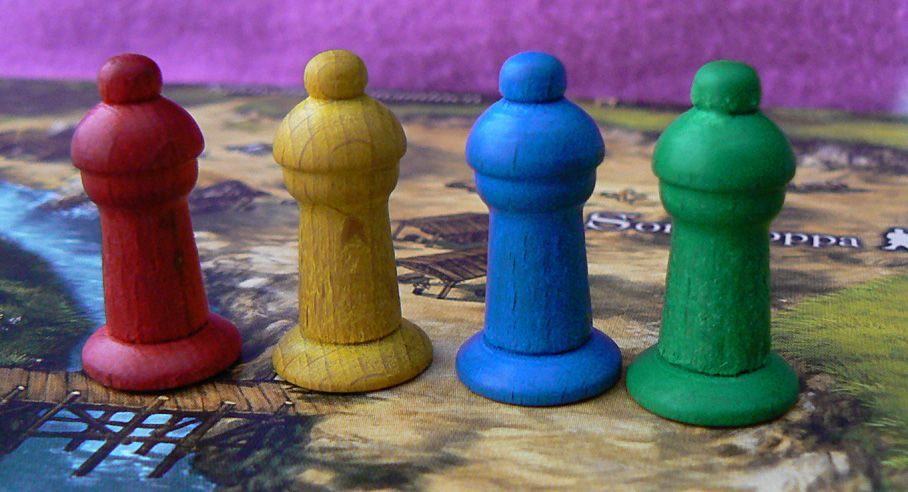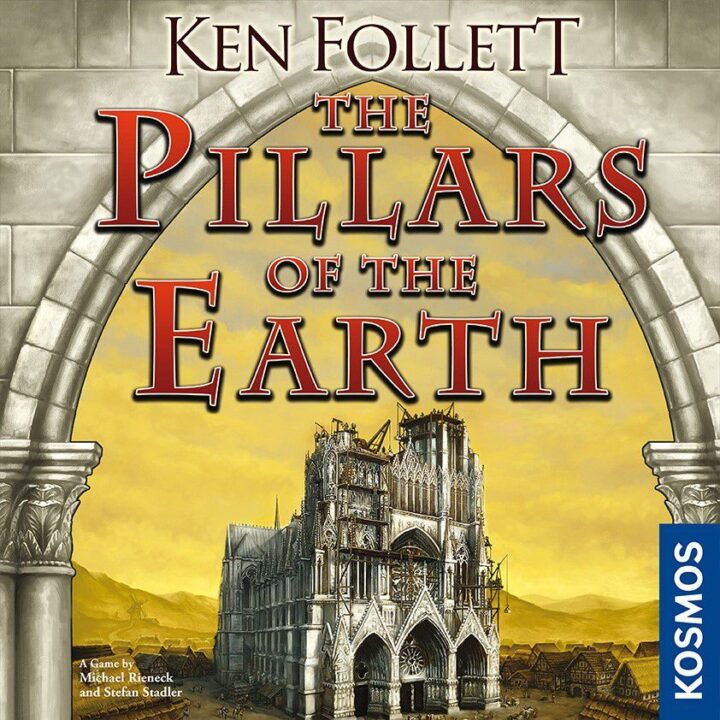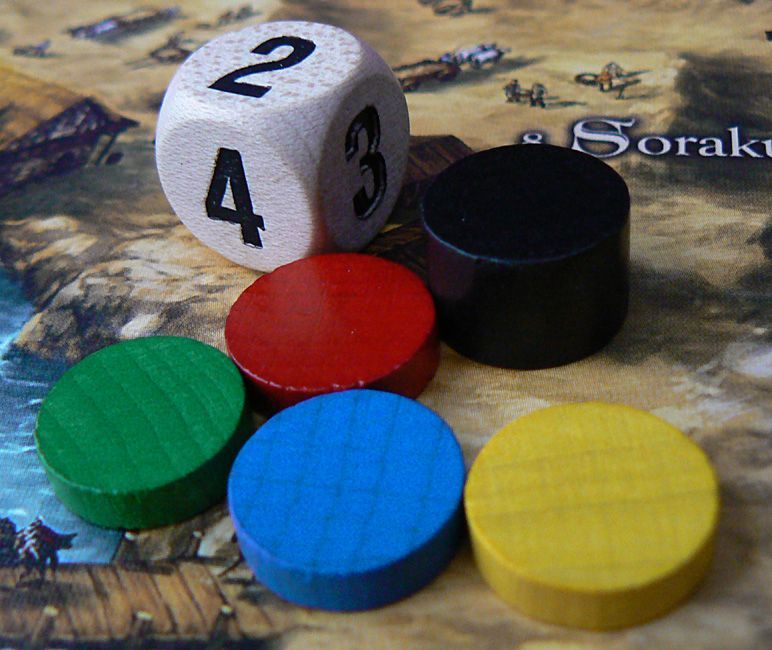Overview
Welcome to my board game sphere where I piece together the mosaic of strategic entertainment alongside the backdrop of camaraderie. Today, we’ll dive into the hearty essence of worker placement clout, unravel the intricate tapestry of player connections, and lastly, appraise the structural heft in the advancement of buildings within the storied confines of ‘The Pillars of the Earth.’ Prepare yourself for a compelling amalgamation of opinion, analysis, and personal gaming tales as we assess this literary adaptation turned board game romp. This isn’t just a review; it’s an expedition into the cardboard-and-cubes heartland of this evocative and engrossing ensemble.
How It Plays
The Pillars of the Earth draws players into a medieval world of cathedral-building with its engaging worker placement mechanism and strategic resource management. The game unfolds over six rounds, each mirroring a stage in the construction of a grand cathedral.
Setting up
To set up, the game board is laid out, craftsman cards and resources are placed in their respective spots, and players receive their pool of workers. Players choose their starting resources and the initial master builder tokens are drawn to set the upcoming turn order.
Gameplay
During gameplay, the allocation of workers onto various action spots is what drives the engine — from collecting new resources, hiring craftsmen, to contributing to the cathedral’s construction — this is where player decision-making truly shines. The turn-based drafting of master builders, which affects the cost and order of actions, injects a dynamic layer of strategy.
Winning the game
Victory arises from astutely managing resources, cautiously planning with craftsmen cards, and strategically placing master builders. Points are accumulated through various means but being the most efficient at contributing to the cathedral greatly advances one’s efforts. Progress is marked on the scoring track around the board’s edge, and the player with the most points at the end of the two phases is declared the winner.
Want to know more? Read our extensive strategy guide for The Pillars of the Earth.
The Intricacies of Mastering Worker Placement
Delving into the realm of worker placement strategy unveils a complex tapestry of decision-making and resource management. Notably, during my playthroughs of The Pillars of the Earth, this complexity becomes even more poignant. Anticipating Opponents’ Moves Here’s a personal anecdote: it was the penultimate round, and I needed to position a worker to procure wood – critical for my construction phase. Meanwhile, Sarah eyed the same spot, pondering her own strategy; I could see the cogs turning. The thrill was in outguessing her, mustering the keen foresight cultivated over countless plays. Ultimately, it’s the multifaceted decisions stemming from anticipating counters that elevate these mechanics beyond mere token placement.
Optimizing Resource Allocation
Equally significant in understanding the gravity of worker placement is grasping the scarcity puzzle. In every session of The Pillars of the Earth, I find the allocation of workers to various tasks supremely critical. Over extension can be crippling; however, too conservative, and you’ll find your coffers and resources laughably bare. Striking this balance under the vigilant eyes of fellow architects fosters a sense of chess-like deliberation, enriching the gameplay depth.
This delicate dance of calculation and adaptability ensures no single strategy reigns supreme – adapt, learn, and prevail. The efficacy of your game plan is persistently put to the test against human unpredictability. And with The Pillars of the Earth Review serving as a touchstone, the game acts as a proving ground for honed skills and gut instinct.
If worker placement convergence fuels the mental gears, then Player Interaction and Engagement are the very heartbeat of a lively board game arena.

The Social Scaffold of ‘The Pillars of the Earth’
When we gather around the board, the vibrant social fabric of ‘The Pillars of the Earth’ is palpable. Turning back the clock to one of my riveting playthroughs, I remember the rush of choosing master builders. Early in the game, a close friend wagered heavily on a key building resource, sparking a hilarious price war that’s still referenced in our game nights. This illustrates the dynamic player interaction ingeniously built into the game’s mechanics.
Strategic Alliances
The game champions subtler forms of interaction through trade and resource management. Often the camaraderie has emerged in whispers and nods, forging temporary alliances to thwart the leading player. In that moment, players are more than builders; they’re politicians in a medieval power struggle, reminding us that not all interaction is overt.
The Pulse of Competition
However, it’s the unspoken competition that pushes players closer. While battling for supremacy to erect structures, a friendly rivalry inevitably blossoms. In one session, laughter triggered by a sneaky blockage maneuver broke the thick suspense — this typifies the engagement ‘The Pillars of the Earth’ fosters, leaving room for such delightful social interactions.
These social interactions don’t just add flavor to the game; they’re significant contributors to the overall enjoyment, reaching a crescendo as every strategy is either rewarded or victim to another’s ingenuity. Always, the conversation spills over to anticipation for the next key element: the satisfaction of Building Progression.

The Architect Within: Constructing Victory
Reflecting on building progression in ‘The Pillars of the Earth’ evokes a sense of architectural triumph. From Foundations to Spires Each meticulous decision to commit resources turns wooden cubes into majestic buildings. There’s a tangible, profound satisfaction watching your strategies solidify into towering structures. Much like a maestro conducting an orchestra, I recall vividly how strategically positioning my workers influenced the crescendo of my cathedral’s completion.
Edifice Complex With each phase, my personal narrative entwined further with my creation, reaching beyond wooden pieces and onto the landscape of Kingsbridge itself. The crowning moment for any game night was when my friends, competitors in craft, surveyed the near-completed cathedral; breaths held in wonder and rivalry. The visceral feeling of success, the after effect of sound strategy and perhaps, lady luck, delivers an undeniable pleasure burgeoning on pride. All eyes affixed on the intricate tableau—our concrete achievements in a build-it-and-they-will-come moment.
Thus, the sentiment is undeniably clear, ‘The Pillars of the Earth’ deserves hearty recommendation—it achieves a winning combination of intellectual challenge and visual gratification, all wrapped up in an evening well spent.

Conclusion
This conclusion wraps up our deep dive into The Pillars of the Earth. We’ve explored the strategic depth offered by its worker placement system, the vibrant player engagement stemming from interactive gameplay, and the gratification that comes from the game’s sense of building progression. With all these facets considered, whether you are a newcomer to the genre or a board game connoisseur, The Pillars of the Earth stands as a recommendable beacon in your gaming collection, promising hours of captivating play and engaging social dynamics.

